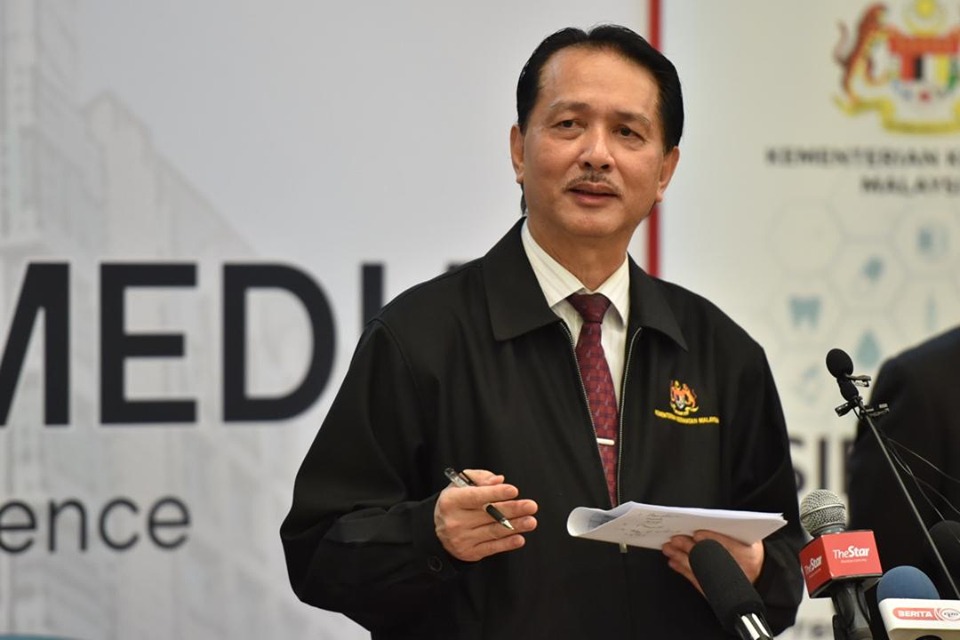KUALA LUMPUR, August 10 — The Ministry of Health (MOH) does not perform the maximum daily capacity of 38,600 Covid-19 tests, due to a 0.86 per cent positivity rate in a million tests so far.
This means that fewer than one person out of every 100 people tested is found positive for coronavirus. Health director-general Dr Noor Hisham Abdullah also said Malaysia ran 31.29 tests per 1,000 population as of August 7, close to South Korea’s rate of 31.14 tests per 1,000 people.
A graphic shared by MOH showed far higher testing rates in Singapore (111.22 tests per 1,000 population), New Zealand (100.98 tests per 1,000 population), and Australia (181.65 tests per 1,000 population), besides other Western countries like Canada, the United Kingdom, and the United States. Notably, New Zealand and Australia showed low positivity rates at 0.3 per cent and 0.4 per cent respectively. Singapore’s positivity rate was 8.1 per cent.
Dr Noor Hisham explained MOH’s various coronavirus surveillance mechanisms: screening influenza-like illness (ILI) cases, severe acute respiratory infections (SARI), pre-surgery screening, and screening health care workers.
“We have done more than 80,000 pre-operative screening cases and the positive rate is only 0.05 percent in the community. So it represents the community.
“In terms of surgery, rich and poor, urban and rural, they come for surgery for other reasons, but we are doing the testing, so that gives us a very accurate representation of the community infection — 0.05 per cent, less than 0.9 per cent,” the Health DG told a press conference today.
He cited the World Health Organization’s (WHO) positivity figures of 10 per cent or 15 per cent that indicate insufficient testing.
Some medical experts and lawmakers have urged MOH to expand Covid-19 testing and to work with private general practitioner (GP) clinics to detect coronavirus cases in the community.
Dr Noor Hisham also mentioned today the types of face masks available and the group of individuals that should use them, pointing out that even if the face covering is made of fabric, it should be a three-ply mask.
He cited clinical evidence showing that the usage of face masks helps to prevent the spread of the coronavirus by 60 to 65 percent. Additionally, with social distancing, the risk of Covid-19 transmission can be further reduced.
“We have also seen the use of the face shield and we can use face shield to cover our faces. So far, there is no clinical evidence stating that it can help prevent the transmission of the virus, but at least we have some form of protection,” said Dr Noor Hisham.
“So, it is better to wear a face shield than not wearing it at all”.
The Health DG also mentioned that MOH’s public health actions have successfully controlled the spread of the coronavirus in Kedah, Perlis, and Penang, after a few clusters broke out recently in the northern region, most notably the Sivagangga cluster with 45 cases.
“The Institute for Medical Research (IMR) is studying and have separated the coronavirus from the Sivagangga cluster and in a week’s time, they will be able to see the genomic sequence on the virus to see if the virus is mutated or not,” Dr Noor Hisham added.
When asked about the quarantine policy for foreigners coming into Malaysia, the Health DG responded by saying that Malaysia has to ensure the local transmission is managed before opening up borders.
“The moment we open up, we must look into the possibility there’s a risk of infection coming in from the tourists etc.
“So far, I think we are not ready yet to open up our borders, but discussions can be carried out and to look into SOP standardisation on both sides,” he said.
Dr Noor Hisham also said that Malaysia has not been selected as a hub for a Phase three clinical trial for a Covid-19 vaccine by China.
“At the moment, we have more questions than answers. Until we see data for the Phase 3 clinical trial in terms of safety, side effects, and etc, we cannot conclude but we encourage vaccine research to carry on.
“But we are waiting for the data for us to look into the efficacy of that vaccine,” he responded, when asked when possibly Malaysia can give out a Covid-19 vaccine to the public.
Xinhua News Agency reported a World Health Organization (WHO) official as saying recently that three potential coronavirus vaccines from China — Sinovac, Wuhan Institute of Biological Products/Sinopharm, and Beijing Institute of Biological Products/Sinopharm — were among six vaccine candidates entering Phase 3 clinical trials.
The other three are produced by the University of Oxford/AstraZeneca, Moderna/NIAID, and BioNTech/Fosun Pharma/Pfizer.








